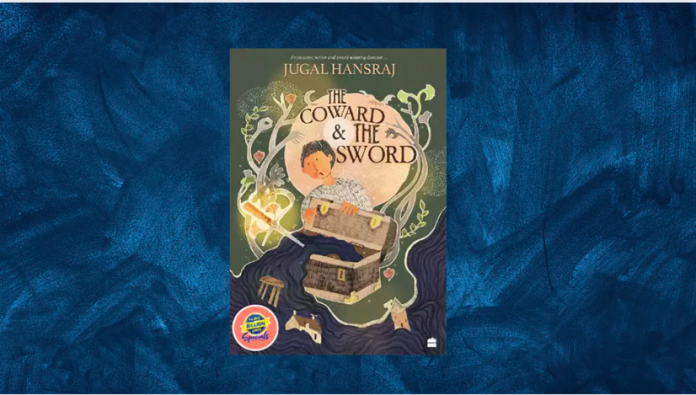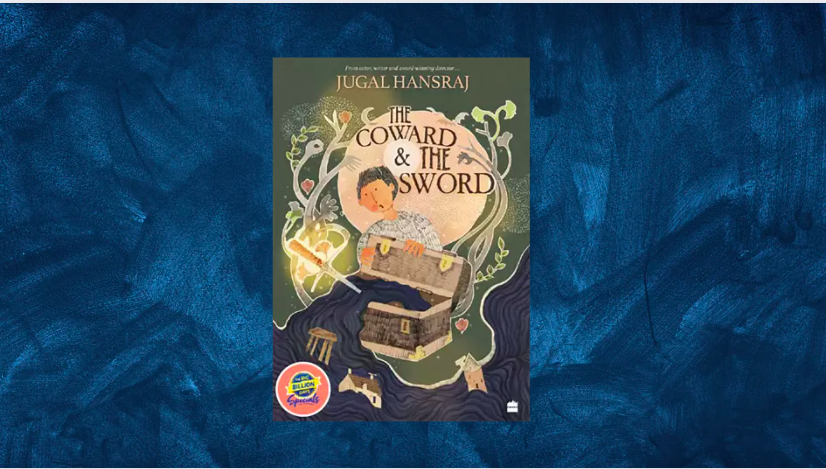The Coward And The Sword
by Jugal Hansraj
Publisher: Harper Children’s
“A sword is useless in the hands of a coward” – Nichiren Daishonin and Granduncle Shonin from the book
It started out as a book about our protagonist, Prince Kadis of Kofu, his cowardice and the kingdom of Kofu, ruled by the brave King Rissho. The story then transforms into an adventure that Prince Kadis and his trusted friends Shijo and Sara embark on in this coming-of-age novel.The book begins with Prince Kadis telling us that he has never left the palace gates on his own accord or had any friends. His mother, Queen Kanito, appears to be his closest confidante, having told him about the Kingdoms of Kofu and Molonga, and how they are on the verge of war. And the only way to be safe is to stay within the palace walls. He found solace in his solitude and felt like a coward when he compared himself to his brave but wise parents and the brave people of the kingdom. The prince, his friends, and the king travel to the edges of the kingdom to meet with the army stationed to build a wall across the border from the neighbouring kingdom of Molonga. On that journey, accompanied by his friends Shijo and Sara, he meets his never-met-before granduncle Shonin, the King’s uncle, who alters the plot. The real adventure begins from here.
The plot follows Prince Kadis’ journey, but it also emphasises different types of bravery. Bravery is not limited to those who fight for their land. It can also be found within, as in the case of Kadis. Brave can also refer to a wise person who is willing to go to any length for their kingdom/land and people. The story also focuses on the friendship of Kadis, Shijo, and, Sara and how important it is to have a support system. The all-powerful sword that had caused the rift between relatives of the same family was to be used to bring peace between the current kings of both Kofu and Molonga. The author raises an important question: “Is war necessary?” in any scenario, and that war should be a last resort after peace has been given a chance.
The major themes in the story, in my opinion, run parallel to each other: the protagonist’s coming-of-age and what constitutes true bravery. The prince regards himself as a coward, as stated in the title. His father, the King, initially forces him to make some wise and supportive friends. They eventually become as thick as thieves, sneaking into an opposing kingdom, befriending the princess, and eventually becoming “Young Soldiers of Peace” between the two warring kingdoms, he overcomes his fears one-by-one by the end of the book.
I have two favourite characters in the book; Prince Kadis and Granduncle Shonin. I chose Prince Kadis because I identified most with him. His young, sixteen-year-old shoulders carry the burden of the kingdom passed on to him by his father, King Rissho. The pressure of war, the fears of being in front of so many people and soon being responsible for them. His sheltered up-bringing for sixteen years made him feel like he did not fit in with his very able and wise, peace-loving parents.
I chose Granduncle Shonin, King Rissho’s uncle and King Nara’s brother, also family to King Toki of Molonga, as my second favourite character in the book. He is that character in many books that shows up just when needed to push the narrative. He reminded me of Albus Dumbledore of the Harry Potter series or Gandalf the Grey of the Lord of the Rings series. They, like Shonin, in our story impart knowledge with every word they utter. When Kadis introduces himself to his granduncle as a coward, Shonin tells him, “Admitting that you’re not brave is the bravest act of all, my child!” He gives the sword to Kadis and tells him that “A sword is no use in the hands of a coward”. In short, granduncle Shonin provided the much-needed confidence boost for young Kadis. And he was always there when needed and had a well-connected network to help the children.
What I liked about the book
The author has weaved adventure into his story through the excitement of children infiltrating a kingdom in disguise and repeatedly encountering stumbling blocks and learning how to overcome them. It also identifies where true courage can be found, from within. The constant assistance from Shonin, Myo, Mr. Joi, and his many spies in getting the children to Molonga was refreshing. The illustrations on almost every page of the book transport the reader into the story, making it more visual and allowing the reader to put a face to the character just described. Every word in the book paints a fantastic picture that consumes and draws you in to become a part of the story.
What I thought could have been better
The constant barrage of stumbling blocks that the kids had to overcome at every turn. Some of the blocks could have been more cerebral in nature, with mystery and wit. The cast was a group of children around Kadis’s age who could have handled some of the situations on their own. Nonetheless, the adventure was fun to be a part of. Some of the characters, such as General Seiya, Princess Tara of Molonga, and Queen Kanito of Kofu, began with a lot of promise of development but were reduced to a dwindling role a few pages later. Other than the Sword, General Seiya was the other villain in the story. In my opinion, his role towards the end was cut short. The ending, while wholesome, was a little over-the-top, but as the saying goes, a king always knows.
Conclusion
Though the coming-of-age trope is as old as time, the story, the protagonist, the kingdoms of Kofu and Molonga, and the other supporting cast have successfully come together to bring us this wonderful book. I have known Jugal Hansraj as an actor and a director, but this is the first time I am reading a book he has written. The reader is hooked from the first line of the book, “The early morning light bathed the room in a warm glow… The white powdery sands of the beach far below him and the azure waters of the ocean beyond were starting to glisten like a million jewels.”, so visual and attractive.
A fabulous book by Hansraj with fantastical imagination and stupendous illustrations by Ruchi Shah. The cover page illustration needs a special mention as well. I love reading, and reading children’s fiction is a childhood habit I do not want to break. The story has a moral, much like the stories we would hear from our grandparents, parents, or read in books from our childhood. The moral here is that bravery lies within oneself. All you need is someone to
believe in it along with you and to push you to find it.









A constructive review which does not either praise the author to skies or does not unduly pan the book. A balanced view which encourages reader to look for a copy and the author to work on his next.